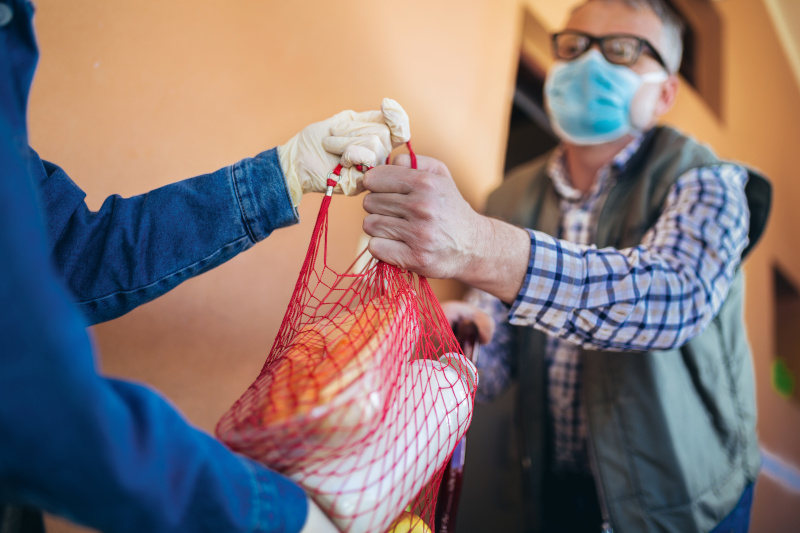3 Questions to Ask Before You Accept In-Kind Donations for Covid-19 Relief
Jasmine Jones
Published: 04/30/2020

In response to the Covid-19 pandemic, donors have been eager to give anything that they can, including PPE, food, and other useful equipment for medical staff. With this influx of gifts in-kind, the question we now must answer is “how do we handle these gifts?”
The bottom line is that every organization handles in-kind gifts differently, but there are some standard guidelines that are helpful to keep in mind. Here are a few common questions about accounting for in-kind gifts and resources to help you with each scenario.
What type of in-kind gifts am I receiving?
The first important part is to gain an understanding of the types of in-kind gifts you are receiving. AHP's Standards Manual classifies three types of gifts in-kind:
- Real Property: Includes primary residences, vacation homes, farms, ranches, commercial buildings, apartment buildings, subdivision lots, or land.
- Personal Property: Includes anything other than real property, including works of art, books, and medical equipment. Personal property also may include gifts donated to organizations to auction at charity fundraising events. There are two types of personal property.Tangible Personal Property includes medical and other equipment, food, personal collections of art, books, coins, or movies, cars, boats, and aircraft, securities, and printed materials. Intangible Personal Property includes copyrights of cultural, artistic, and literary works, trademarks, software, and life insurance policies.
- Contributed Time and Services: Intangible work typically provided via an individual's professional skills, such as accounting, financial, construction, educational, electrical, legal, medical and other services provided by accountants, investment advisors, contractors, teachers, electricians, lawyers, doctors, and other professionals and craftspeople.
What are some tips for reporting these gifts?
Using the three gift types we’ve reviewed, here are a few tips from the AHP Standards Manual for reporting each one:
Real Property
In the United States, for a donor to take a tax deduction for a gift of real property, the gift must be appraised by a qualified appraiser unrelated to the donor, the recipient organization, or the transaction itself. The donor is responsible for any associated appraisal costs. The appraised amount is the valuation that should be placed on the gift for reporting purposes. The date the gift is officially received is the date the gift should be recorded. When acknowledging non-cash gifts for the donor’s tax purposes, IRS rules require the organization to describe the non-cash gift but not to include a value of the non-cash gift on the acknowledgment.
In Canada, a gift of real property is complete when a deed conveying the property to the recipient organization is signed and delivered. A donation receipt, suitable for income tax purposes, may be issued for the current or fair market value of the property as determined by a qualified appraiser. The appraised amount is the valuation that should be placed on the gift for reporting purposes.
Personal Property
Depending on the personal property gift donated, the conversion to cash sometimes results in a mission-related donation and sometimes does not. When the items can be used by the organization or the facility it supports (e.g., a piece of equipment), these result in mission-related donations and the charitable deduction to the donor is the item’s fair market value. When the items cannot be used by the organization or the facility it supports (e.g., a piece of jewelry), these result in non-mission-related donations and the charitable deduction to the donor is the item’s cost basis.
Contributed Time and Services
Organizations may report certain contributions of professional time and services as fundraising revenue per GAAP if the time or services:
- Create or enhance a non-financial/non-monetary asset (e.g., property and equipment) or would typically need to be purchased if they had not been provided by contribution;
- Require specialized skills; and
- Are provided by individuals with those specialized skills.
If such contributions are reported, they should be measured at fair market value. It is important to note that contributed time and services are not tax deductible to the donor.
How do we set valuation for these gifts?
The general rule of thumb for in-kind gifts is to value them at fair market value. Based on Internal Revenue Service (IRS) and Canada Revenue Agency (CRA) standards, fair market value represents the price that property would sell for on an open, unrestricted market.
Sometimes setting fair market value for items is difficult. However, there are resources available that can help you determine fair market value.
- For donated pharmaceutical products, InterAction released a recommended methodology with a list of valuation sources. They have also included a decision tree on recording pharmaceutical contributions.
- For medical and dental products, Charles Redding, President and CEO of MedShare International, uses Henry Schein Inc. to find retail values. Redding provided additional clarification on in-kind gifts from his point of view:
“The valuation information MedShare provides is based on 50% of the average retail price per item (or similar items) and is provided for information purposes only as a courtesy to our partners. Please note that MedShare does not, and cannot, assume responsibility for valuation that is relevant or appropriate for your purposes. You are responsible to determine the appropriate value for your financial accounting and reporting purposes.”
AHP recommends that you work closely with your supply chain’s leadership to determine the best resources for your organization.
We hope this is helpful. We’ll be sharing this on the AHP Huddle, and invite you to join in the conversation there. We’re also looking for members who would like to be a part of a webinar discussing how you are handling this large influx of in-kind gifts. If you are interested in helping by presenting, please reach out to research@ahp.org.